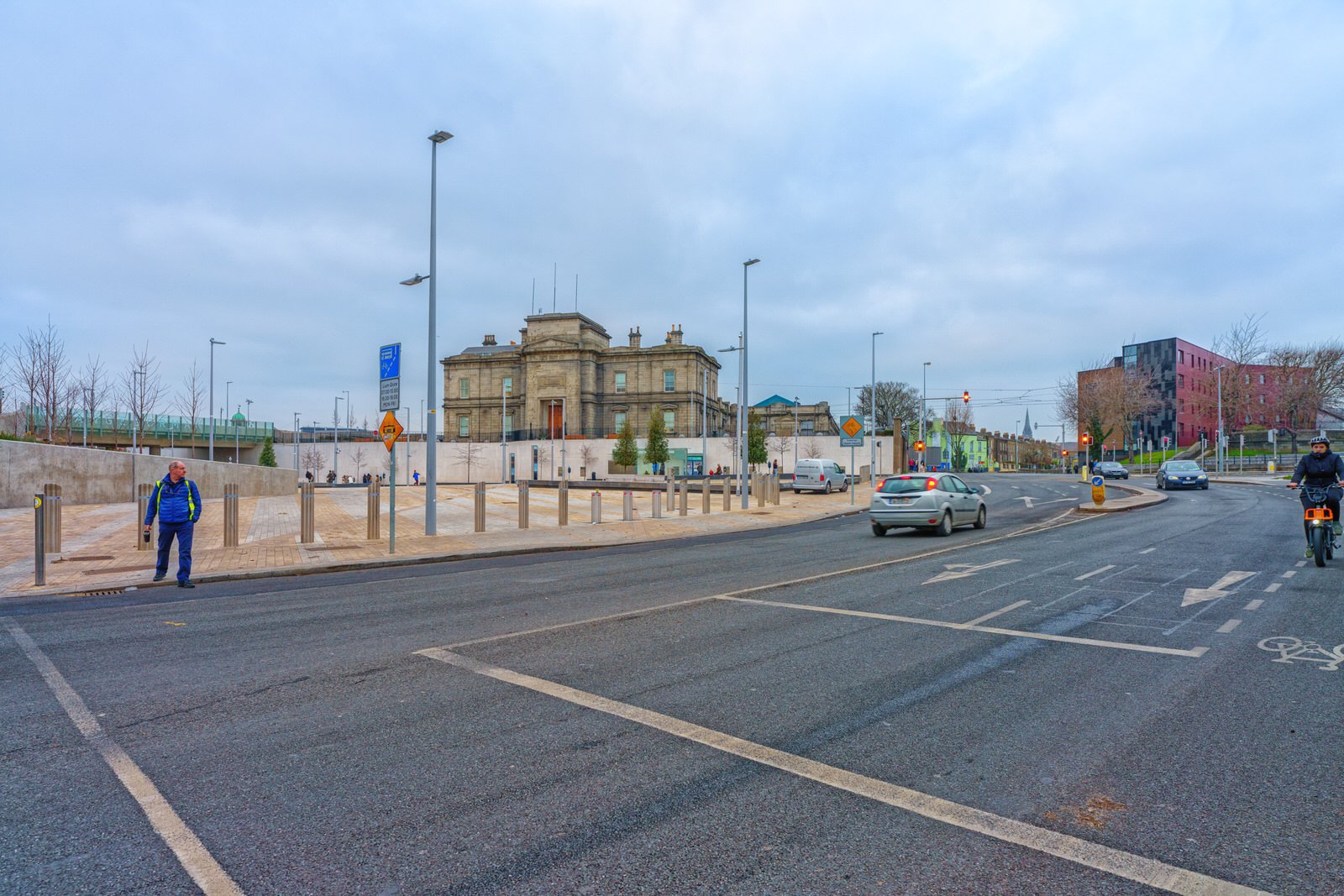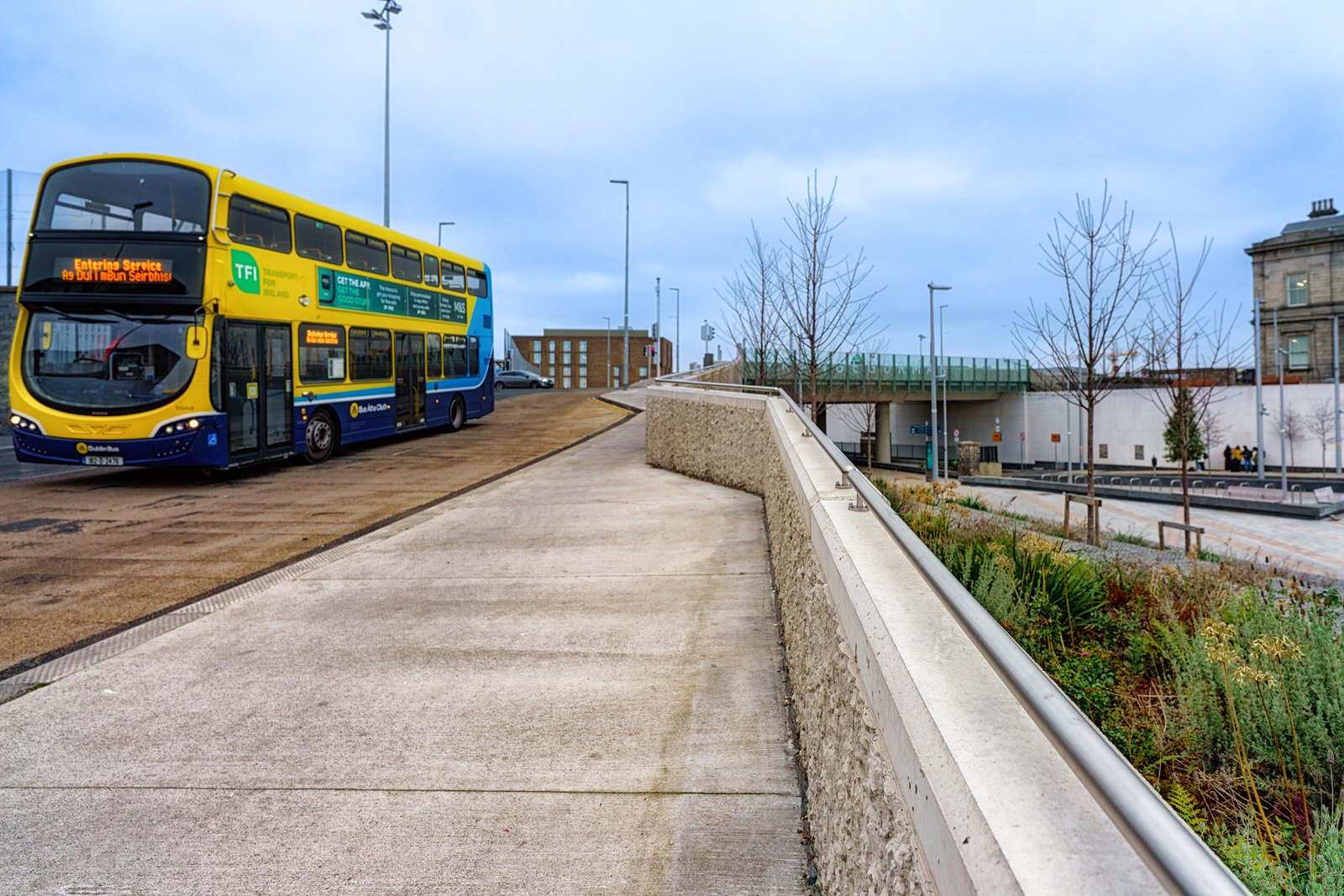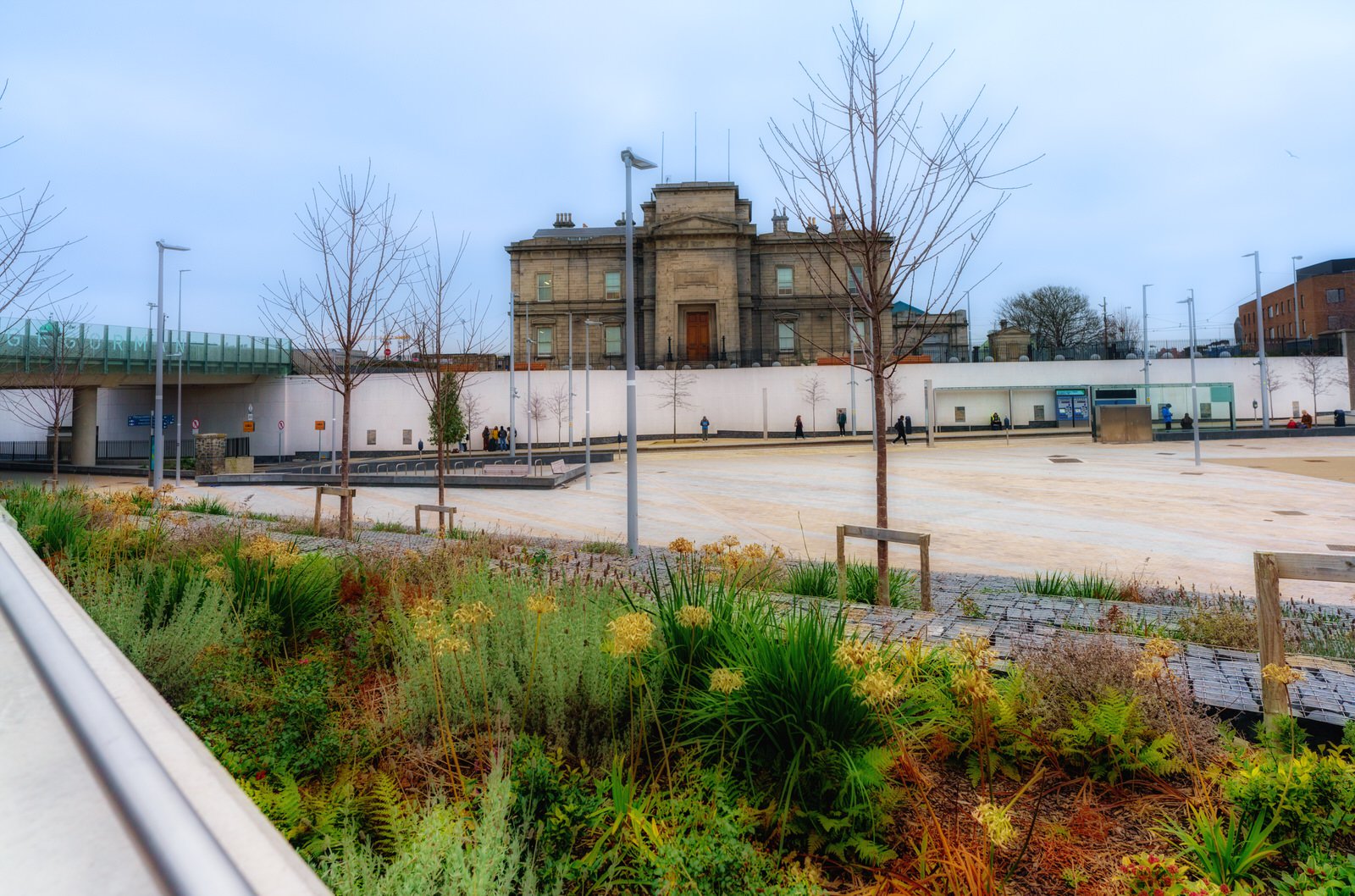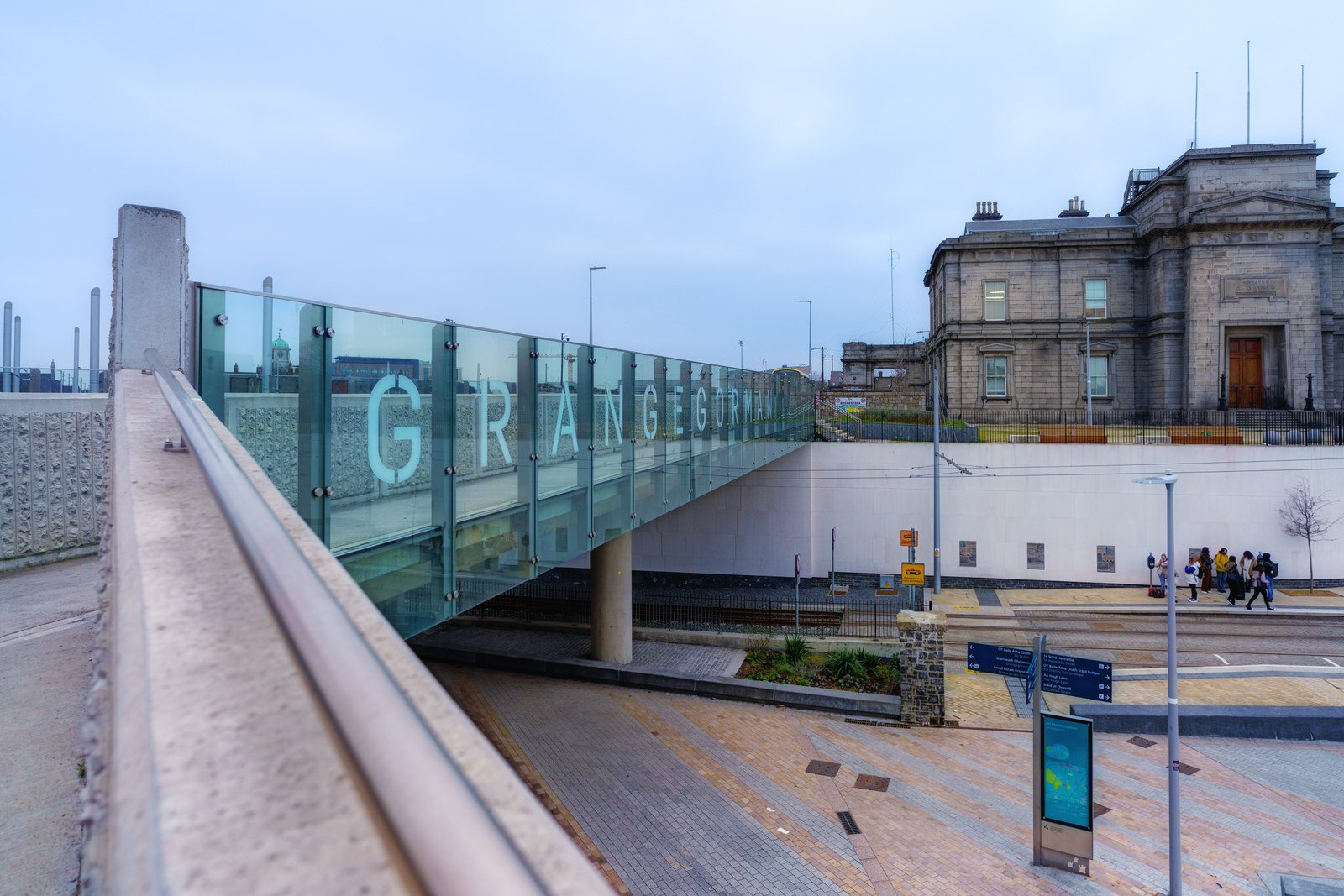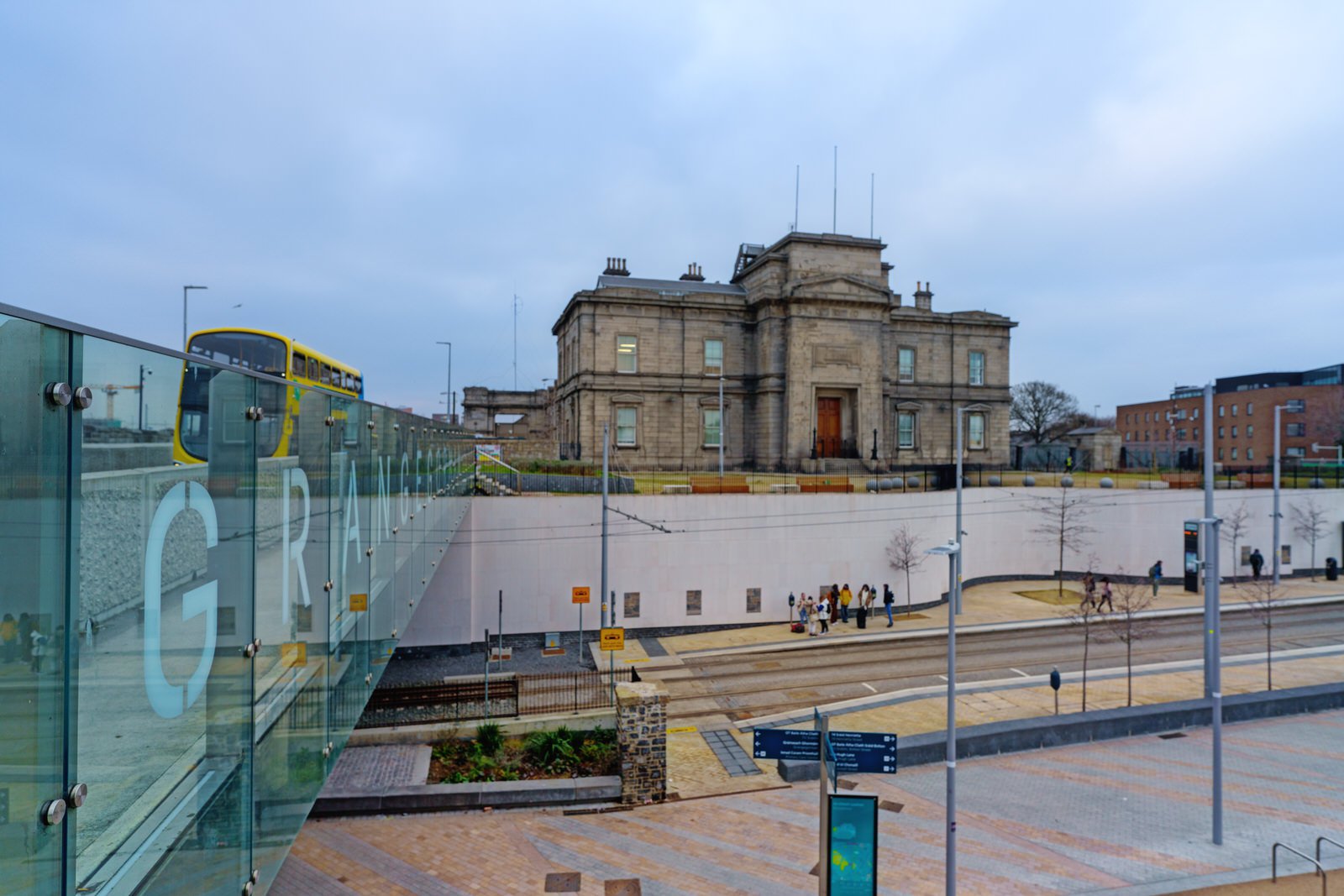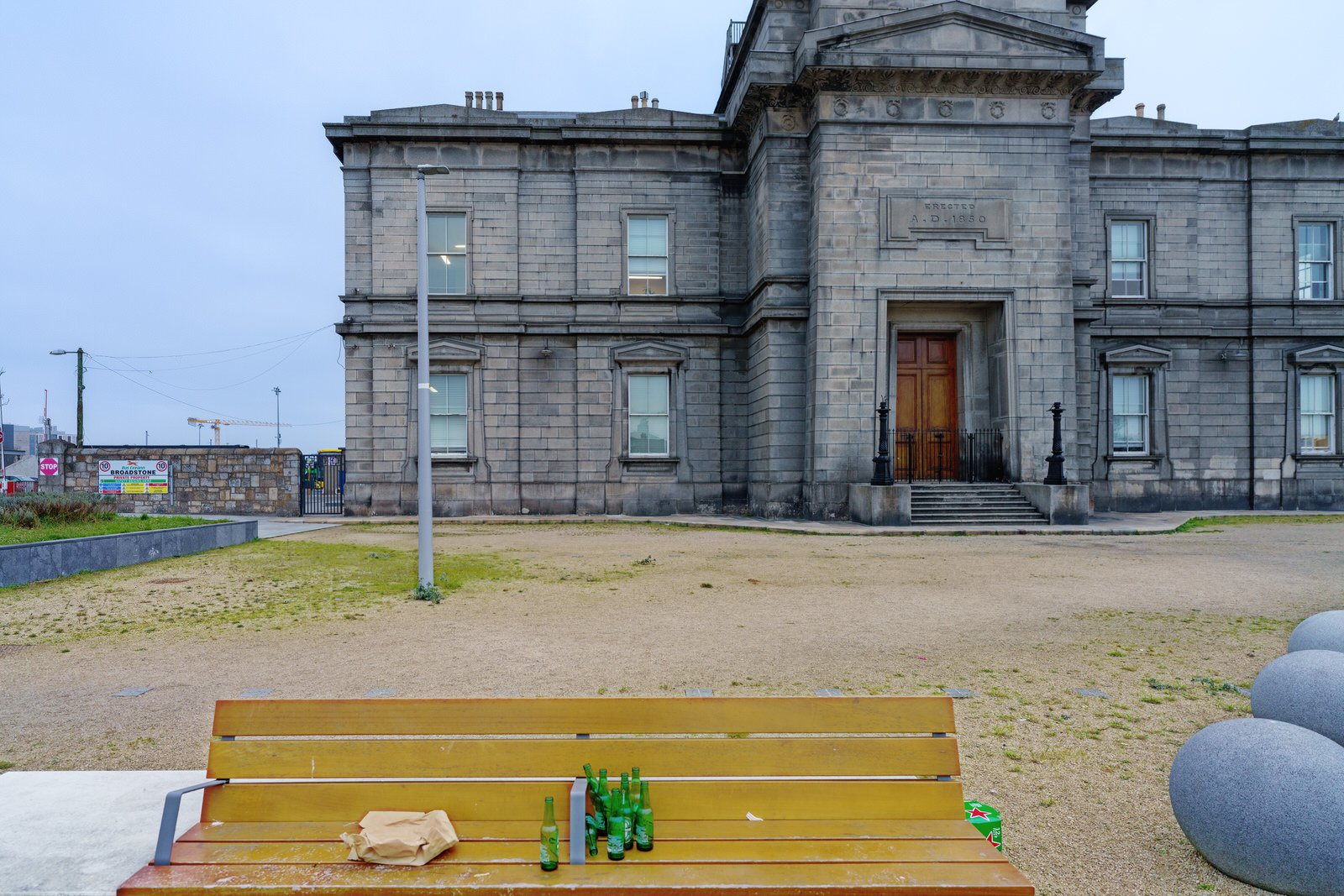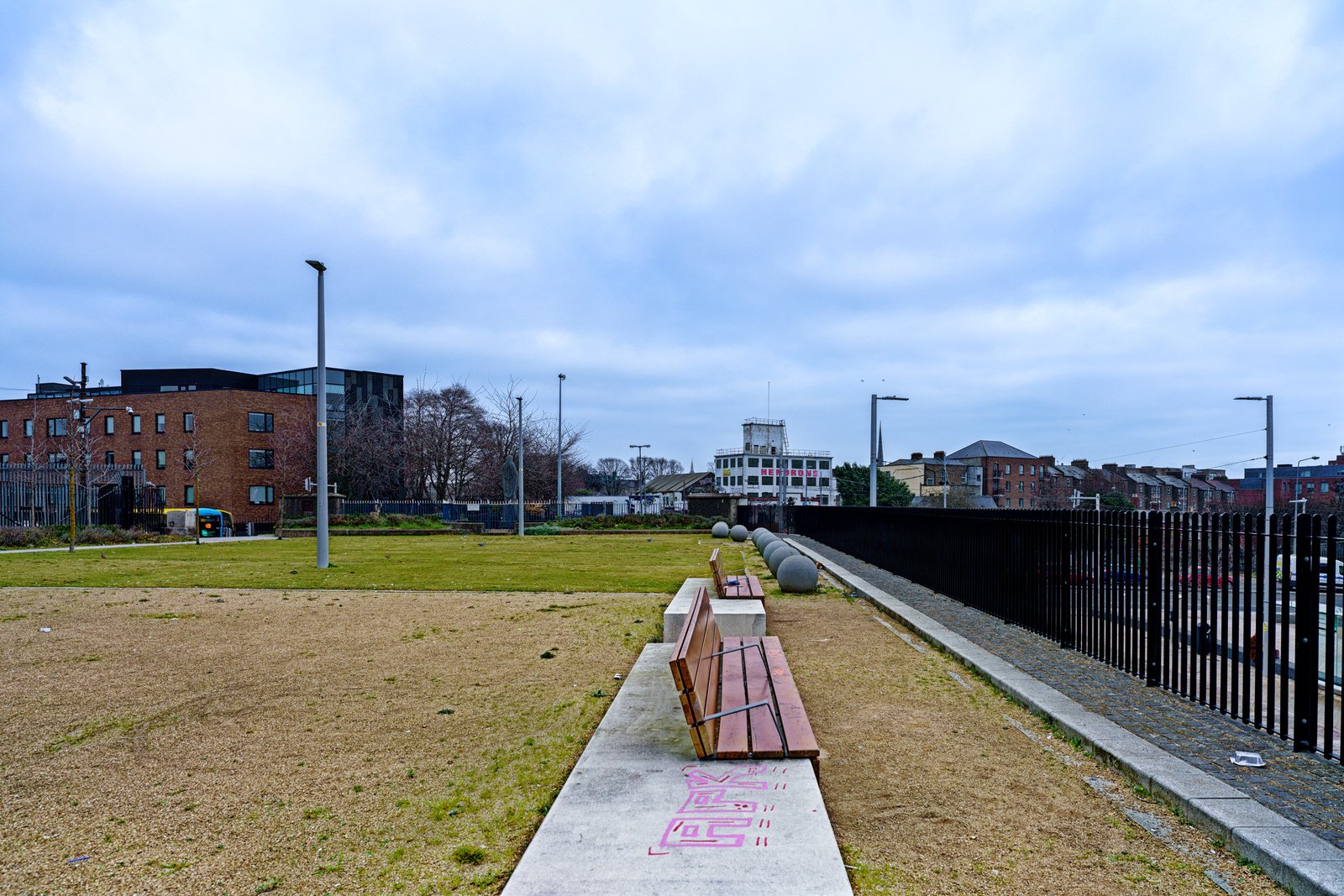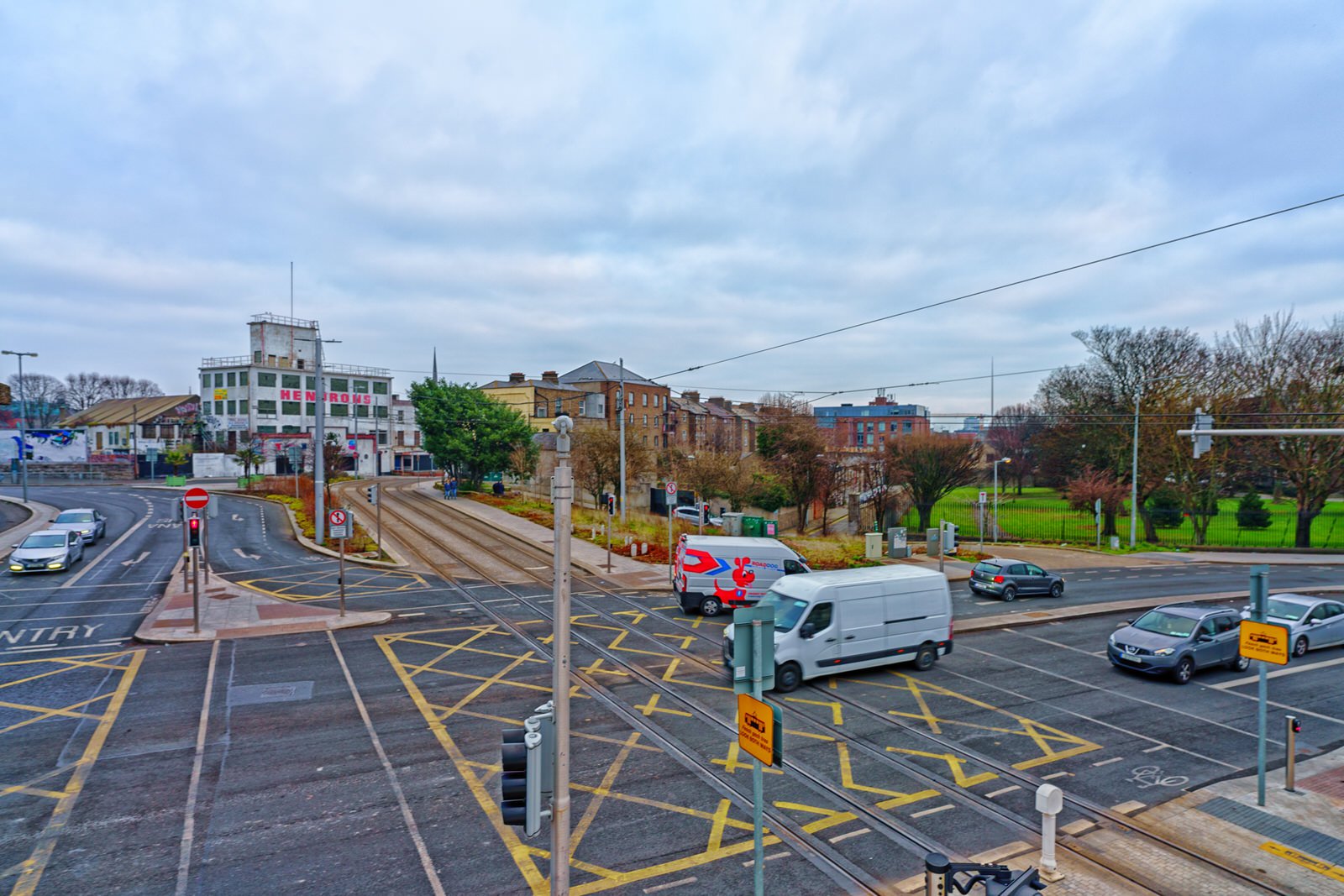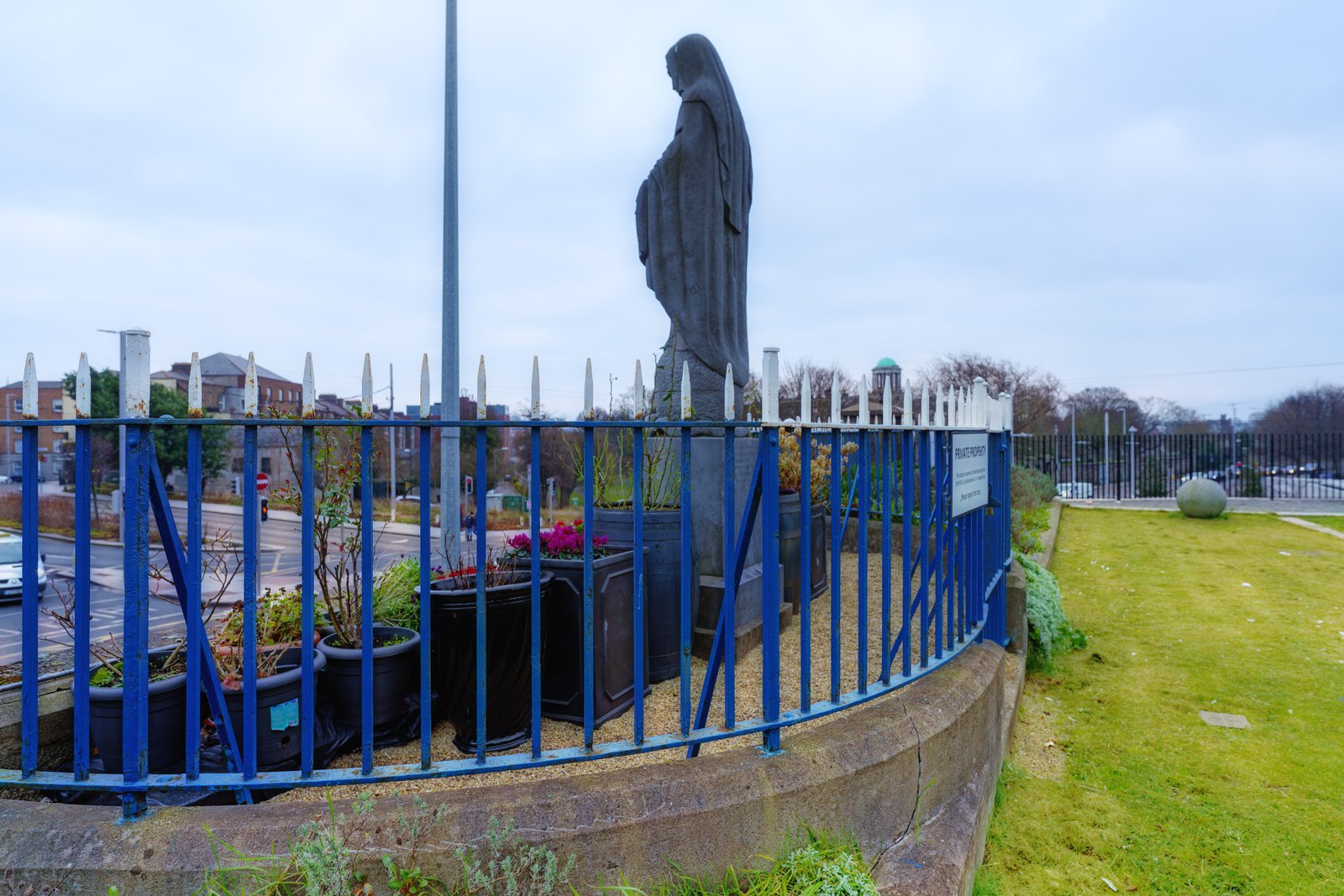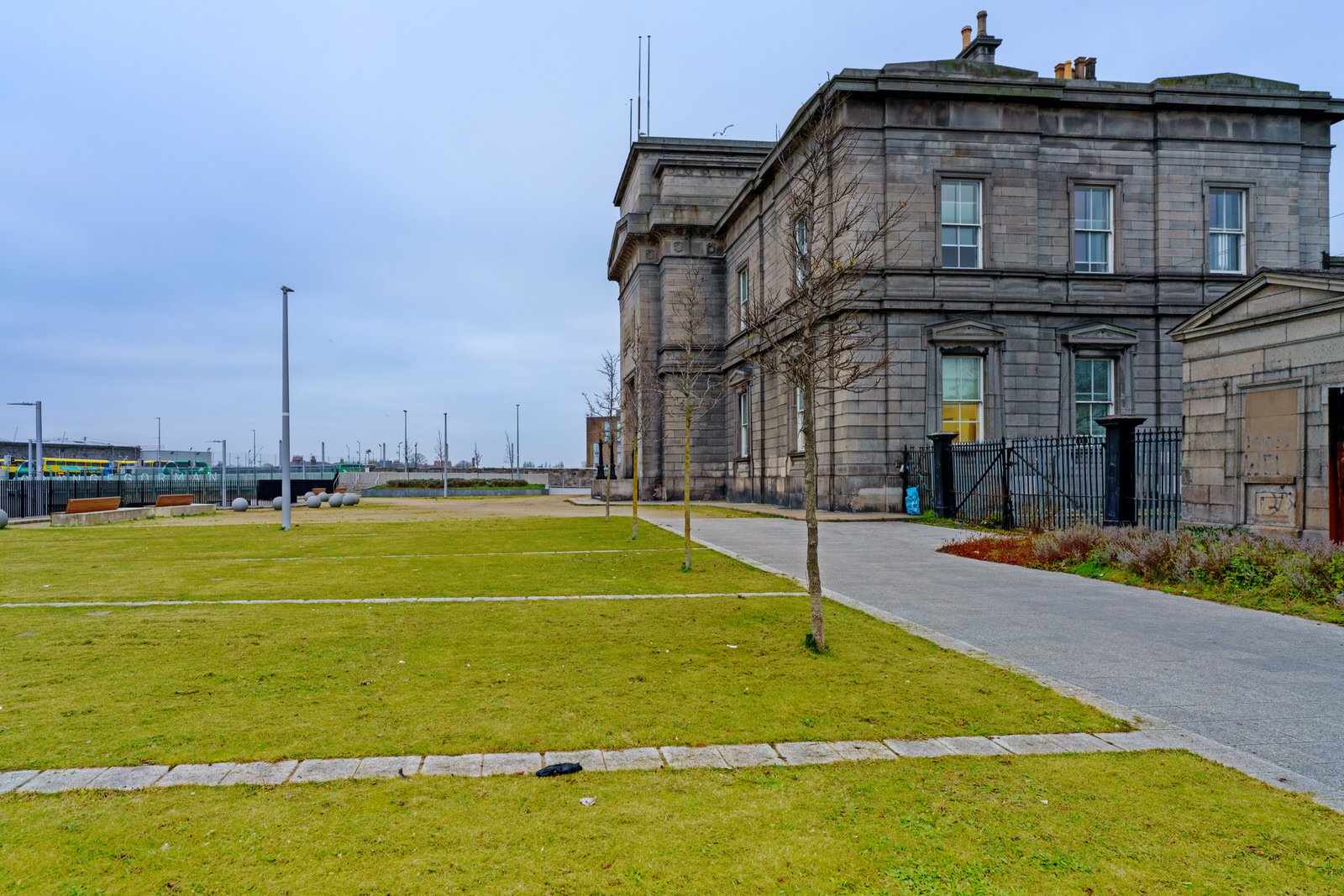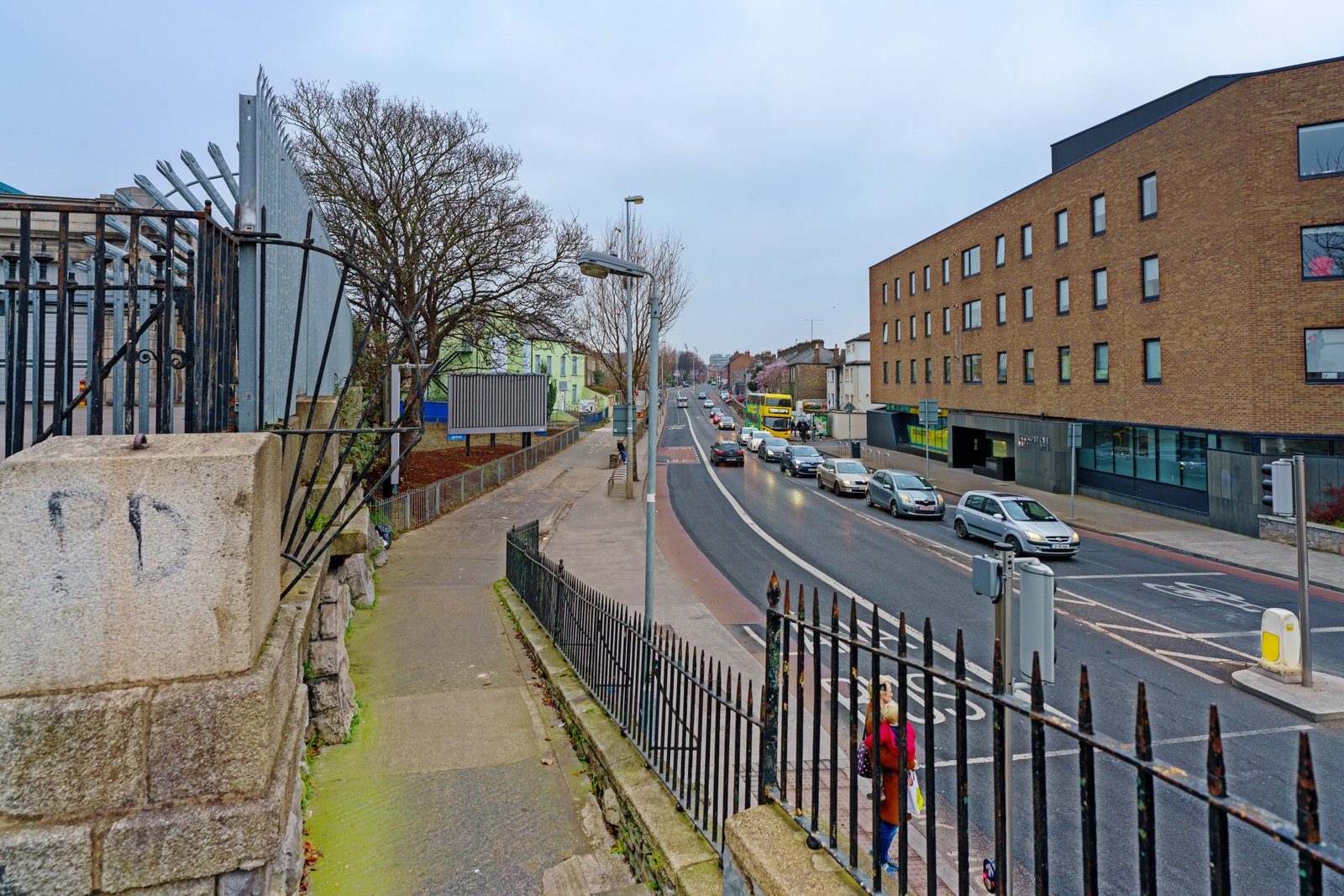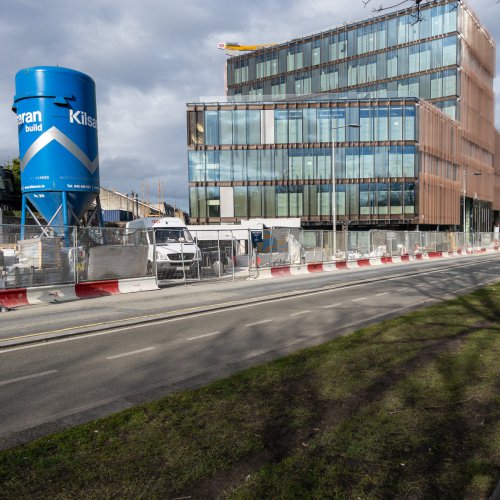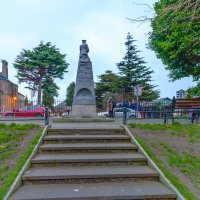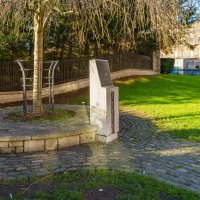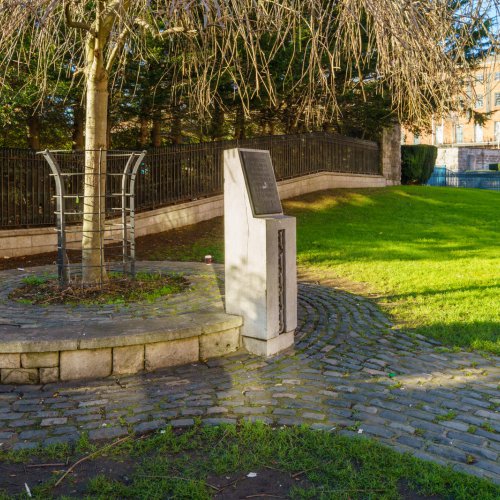In 1845 the Royal Canal was purchased by the Midland Great Western Railway Company for £298,059 with a view to using the land alongside the canal to construct a railway line to the west of Ireland. Broadstone railway station was completed in 1850. The building was one of Dublin's six original rail termini, the others being Westland Row (now Pearse Station) Amiens Street (now Connolly Station), Kingsbridge (now Heuston Station), North Wall and Harcourt Street (now a bar and nightclub complex).
Situated at the crest of Constitution Hill directly opposite King's Inns, the station served as the terminus of the Midland Great Western Railway. Designed by John Skipton Mulvany, Broadstone Station is constructed of granite in a neo-Egyptian style.
With Galway projected to become the main port for transatlantic passenger traffic between Europe and North America, the Midland successfully competed with its rival the Great Southern and Western Railway to reach it first. A special fourth class was introduced by the Midland for poor migrants from the west going to Britain for work. The line, which branched out to serve Sligo, Westport, Achill and Clifden, was also used to transport huge numbers of cattle.
It was about this time that the majority of the houses in the area were constructed, as dwellings for workers on the railway. Most of the worker's houses were built by the Artisan's Dwelling Company, which built many similar estates in Dublin and elsewhere, and houses of this type are now frequently described as Artisan cottages, regardless of their origin.
The Great Irish Famine of the mid-19th century had caused a huge wave of emigration, and the population of Ireland was reduced from about 8 million in the 1830s to around 4 million a century later. The worst hit were the rural population of the west, precisely the market of the MGWR. There was a brief period of boom in the 1870s as the flow of people from the west peaked, but as the people left, traffic in the other direction reduced markedly. As emigration gradually came to a halt, so did the canal system.
The MGWR was never very interested in the canal business and in 1877 they were given permission by the government to close 150 yards (140 m) of the branch line and to fill in the harbour, to construct a new forecourt for the station. That removed the need for a movable pontoon bridge, and a new approach road, Western Way, was built by way of Foster Aqueduct. The harbour was no longer needed due to the construction of one larger and better situated at Spencer Dock, and was filled in to become the forecourt of Broadstone Station.
The small reservoir had been made almost redundant by the construction of a new reservoir at Vartry in 1868, and served only the Jameson Whiskey distilleries at Smithfield, until they left the city in the 1970s.
By the 1920s average annual tonnage on the Royal Canal had reduced to 10,000 tons. In 1924 the MGWR amalgamated with its rival, the Great Southern and Western Railway, to enable rationalisation and survival, and in 1927 the bridged section under Foster aqueduct was filled in, and the canal and railway were permanently disconnected.
By the 1930s the railway was failing too and the last train arrived from Westport in 1937. In 1944 the Canal and Railway both passed into the ownership of the state transport company Córas Iompair Éireann (CIÉ), which transferred all its steam locomotives there in 1954. However, when steam locomotion ended in 1961, Broadstone was closed. Foster Aqueduct was removed in 1951 to facilitate road widening.
Today the historic building is used as offices by Bus Éireann and the rest of the site is used a parking and servicing area for buses, with the main building mostly obscured by public housing and light industrial buildings.
After the closure of the railway came the hardships of the war, rationing, and a prolonged recession. Unemployment and deprivation hit the inhabitants of Dublin's north inner city hard, and the area around Dominick Street, Grangegorman and Broadstone was one of the worst affected by drug abuse, especially heroin. The park at Royal Canal Bank and the disused reservoir at Blessington Street were magnets for delinquents, as was the dereliction around Paradise Place.
The Irish Youth Hostelling association, An Óige, took over the old convent building on Mountjoy Street and this now serves as both the headquarters of the organisation and its main international hostel in Dublin.
The linking canal spur was filled in and made into a long narrow park, Royal Canal Bank, in 1956. The reservoir, however, still exists.
In 1993, after decades of stagnation and neglect, Dublin Corporation's Parks Department began restoring it as a recreational facility, removing 6000 tons of silt and debris, adding a fountain, enlarging the central island for wildlife and undertaking extensive replanting. The Blessington Basin still obtains its water from the canal above the 8th lock, two miles away, but is now a picturesque walled park of one and a quarter acres, with a beautifully paved and landscaped walk around a large oblong body of 4.7 million imperial gallons (21,000 m3) of water, fenced off by wrought-iron railings, and scattered with sculptures and places to sit.
The large site at St. Brendans Hospital, Grangegorman has been developed as the home of the Dublin Institute of Technology - recently renamed TU Dublin. The Grangegorman Development Agency used the new Grangegorman Campus to join the Grangegorman and Broadstone areas, and to provide numerous facilities and amenities for both collegiate and public use.
There have been many calls to have the main building of Broadstone Station restored, and in recent years some have suggested it as a city terminus for the proposed metro system to Dublin Airport, while others have called for the reopening of the old rail line to enable residents of outlying areas along the old route to commute to the city more easily.
The Luas Green Line, serves the DIT Campus in Grangegorman with two Luas stops called Broadstone - DIT and Grangegorman. This connects Broadstone Plaza from Constitution Hill to Grangegorman. The Luas continues northwards to Broombridge railway station along the old Broadstone Railway line and southbound to Phibsboro and Dublin City Centre.
